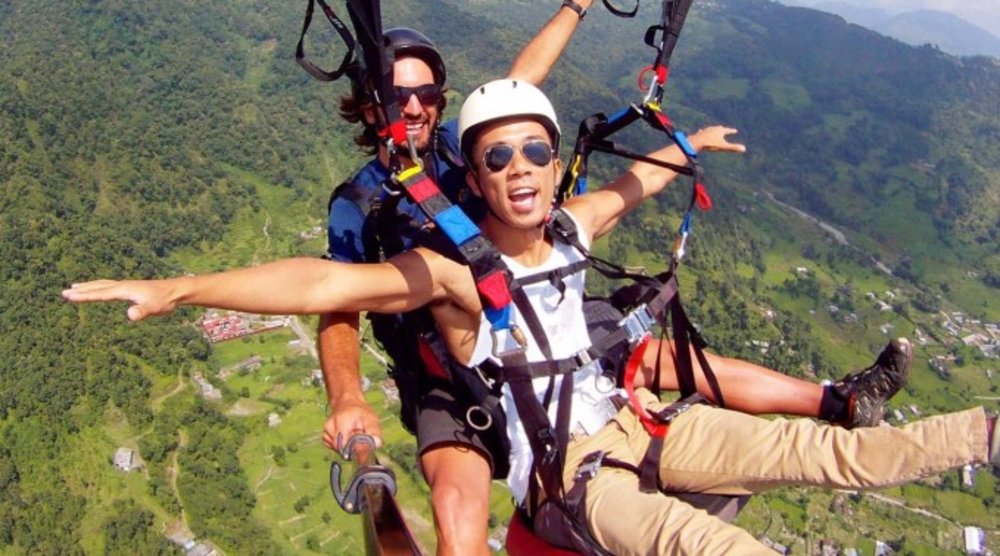It’s a term that was seldom heard in the travel industry until around five years ago. In fact, its rise was so fast that by 2018 the Oxford English Dictionary made it one of their “words of the year”. Writing this in March 2020, during the quietest time in travel for decades, it's easy to forget about the record numbers of visitors that were descending upon famous destinations last year. Yet once Covid-19 passes, an even bigger wave may be coming.
What is overtourism?
It’s defined as the “impact of tourism on a destination, or parts thereof, that excessively influences perceived quality of life of citizens and/or quality of visitors experiences in a negative way”. In short, it spells bad news for all concerned. If you’ve travelled to a major tourism destination, you’ve probably experienced the effect first hand. Whether it’s crowds getting in the way of your otherwise perfect photo of Machu Picchu, or queuing for two hours to buy a ticket for the Eiffel Tower, it’s sometimes enough to feel like you’ve been sold short. If you’d known in advance, would you still have booked? And then there’s the environmental impact. I learned recently that there is currently as much as 30 tonnes of litter on Mount Everest, and that’s a place far less accessible than most.
The impact on the inhabitants of destinations is perhaps most pronounced through the proliferation of holiday homes that are flooding the market. In Barcelona over 1.5m visitors now stay in them every year. The demand is causing large numbers of landlords to switch from long term lets to short stays. In one part of the City the resident population has declined by 45% in the past 12 years.
Why did this happen?
Quite simply more people are travelling than ever before, fuelled by cheaper flights, giant cruise ships and higher disposable income. Local governments have ever growing targets to boost inbound tourism and foreign expenditure, and there has never been more advertising for destinations. Combined with the rise in social media sharing and a generation of travellers who prize the perfect Instagram shot, the numbers will only keep growing, and in turn the pressure on famous landmarks. It’s no wonder that a host of travel bloggers have sprouted up to discuss this topic, one example being the Invisible Tourist who offers thoughtful advice for helping to prevent overtourism.
Technology has certainly also had a part to play in this trend, but can it now also be a force for good? One of the most popular business innovations to emerge from the recent Covid-19 pandemic, has been the use of live streaming and virtual reality experiences to bring people close to the places they love, while social distancing at home. From watching the animals live at Melbourne Zoo to a virtual tour of the Great Wall of China, there are numerous places of interest opening their doors to those at home. In Scotland, their tourism board Visit Scotland embraced this technology to reduce overcrowding at key attractions such as Edinburgh Castle. They created an app to be used on a VR headset that lets you virtually walk around numerous attractions, from the comfort of home, helping you decide if it’s worth a visit. Potentially whole tours could be done in this way in the future for those who can’t quite make the journey.
How does Klook help?
Our mission at Klook is to empower travellers around the world to discover, book, and experience the best things to do anywhere, anytime. So how do we meet our mission without being a net contributor to overtourism? For us, we’ve always looked to technology as the key to sustainable growth.
Fundamental to achieving this is large-scale diversification of supply. Whilst a slick user experience may guide the traveller, it’s the wealth of options that will help them find that perfect match. Since Klook’s beginnings in 2015, we’ve worked tirelessly to discover the “hidden gems” of activities in over 400 destinations around the world.
In our world of tours and activities our goal is to spread out tourists amongst a more diverse range of products, or “flattening the curve” and in turn reducing the heavy concentrations at iconic destinations at the head of the graph. So for every customer that may discover a popular destination such as Universal Studios, there should be another who has used Klook’s platform to discover a much lesser known activity (but no less exciting), such as parahawking in Nepal. If you’re not familiar, this involves paragliding alongside a hawk through the valleys of the Himalayas!
However, in order to fully realise the ambition of a diversified supply of travel activities, it is essential to help the operators to digitise. Many of the businesses in this sector are small, turning over less than $250k USD per year, and previous to working with Klook were completely offline. In fact only 15% of the tours and activities segment globally is currently represented online, lagging far behind the rest of the travel industry which averages 61%. Enabling these businesses to use an online booking system is an important first step for many of our partners, but Klook also offers a range of tools to get them digital, such as our Klook Partner App, allowing upload of inventory, management of availability, user reviews and redemption of vouchers.
But even with the above fundamentals in place for merchants, perhaps the most important responsibility for an online travel agent is to connect this extensive supply with demand. The good news is that the modern traveller has never been more open to “off the beaten track” ideas. With social media as a key driving force for inspiration, they increasingly prefer the unique experience over the stereotypical, and the DIY itinerary over the organised group tour. Additionally, the modern traveller has never been more spontaneous in their travel decisions. This is the Netflix and Uber “on-demand” generation, and the same expectations for ultra convenience very much apply in the travel world.
In the last four years, Klook has seen a nine times increase in the number of travellers booking on the same day of the activity, and over 75% if these bookings are happening on mobile, the primary device once in a destination. Fortunately, with thousands of merchants properly connected to the platform, over 90% of these bookings can be instantly confirmed. We like to call this behaviour, “on-the-go” bookings, and it has an important role in reducing overtourism. With the convenience of instant confirmation, people have the comfort of knowing they can transition to other lesser known activities if their first choice isn’t available.
Secondly, using the online experience to simplify the complexities of travel can be a very effective way to decrease the burden of overtourism. Destinations such as Japan and South Korea often present Australian travellers with a number of challenges, such as language barriers, complex subway maps and new activities for which they have plenty of questions. Allowing customers to more easily digest information online or in-app - pre or post arrival- can prevent the crowds gathering and queueing around tourism information centres, or at the help desks of the activity operators.
Lastly, we must recognise that there is no longer a one size fits all in travel. As travellers become ever more curious, the online marketplace gives a glimpse into these changing behaviours. At Klook we are continually using our data and knowledge of travellers to innovate and bring the right products to the right people. This includes suggesting new ideas to our merchant partners, such as tours in different languages where we have seen growing demand, or itineraries that cater to new social media trends. For example, The instagram tour created by Klook in Bali takes customers to the latest popular spots for their instagram photos, but also includes the cultural stops along the way to see local villages, visit the rice fields and explore the jungle, ensuring there is benefit to the wider community. This tour is also conducted in smaller, more intimate groups - in compact vans rather than large coach buses, that ultimately offer a more personalised experience.
Flattening the curve
I firmly believe the online travel industry can meet the growing demand for travel experiences, whilst distributing this in a way that has minimal impact on beautiful and iconic destinations. This will be more important than ever when travelling surges after the months of isolation during Covid-19. As online travel providers, we have both an opportunity and a responsibility to inspire travellers to venture further from the beaten track. And fortunately also the technology to connect them to it.
P.S It’s also paper-free
About the author: originally from London, Jonathan is a seasoned marketer and avid follower of tech innovation. He began his career driving growth at PayPal and later launched key products for Google in Australia, including Google My Business and Google Pay. With a passion for travel and adventure, Jonathan has travelled extensively around Australia, Asia and South America, where he enjoys discovering hidden cultural gems and teaching his friends to kitesurf. He has spoken at length on the topic of sustainable travel and overtourism at Travel Daze in 2019 and Mumbrella Travel Marketing Summit in 2020.
















![[Updated] Complete List Of Official Nationwide MCO SOP 2021](https://res.klook.com/image/upload/fl_lossy.progressive,q_85/c_fill,w_160,h_104/v1633858858/blog/iso56uzsphmdguixkvzh.jpg)





![[Updated] Complete List Of Official Nationwide MCO SOP 2021](https://res.klook.com/image/upload/fl_lossy.progressive,q_85/c_fill,w_410,h_264/v1633858858/blog/iso56uzsphmdguixkvzh.jpg)






